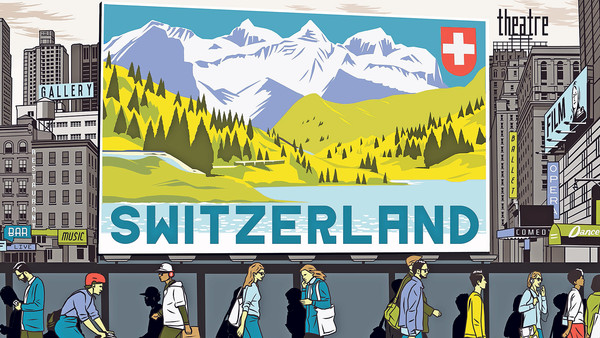In “Why the ‘happiest’ cities are boring,” John Kay of the Financial Times makes a series of very important distinctions between happy cities and great cities, and in doing so he challenges most of the reigning official definitions of happiness and lists of cities where people are supposedly the happiest. He also traces the rise of happiness in cities to the decline (which has not fully kicked in, to say the least) of modernist architecture and planning.
The entire essay is one insight after another strung out with the greatest logic. Here is a string of passages that, predictably, I most enjoyed:
There is evidently a large difference between a great city and a liveable city. That difference lies behind the rise, and fall, of modernist town planning. … The reaction against modernism began in the 1960s with Jane Jacobs’ great book The Death and Life of Great American Cities (1961). … Jacobs’ book began the backlash that finally ended the power of Robert Moses, the master builder (and demolisher) of New York, and halted the decades of rationalism in town planning. … Life in unhappy countries — Myanmar, Syria, Zimbabwe — is not boring, but much of the population desperately wishes it was. Yet boring is not enough.
This collection of lines leads Kay to what are perhaps his most interesting thoughts about happiness:
The most intriguing studies of the determinants of happiness are those of psychologist Mihaly Csikszentmihalyi. The moments at which people are happiest are when they are in “flow” — when they are engaged in a challenging task and doing it well: the lecture in which you realise the audience is hanging on your ever word, the tennis game in which every shot takes the ball where you want it to go. For many people, bringing up children is a source of endless demands and frustrations, but taken as a whole it is one of the most satisfying experiences of their lives. There is more to the good life than clean water and trains that arrive on time.
So what kinds of cities offer the best opportunities for happiness? It depends. Stability and security bring a more palpable happiness to some, and the frisson of action, sociability and creativity generate a more vivid sense of happiness in others. Lists of the happiest cities take fatuity to the nth degree. Hard as happiness is to define, it is probably even harder to survey.
But one quality of cities is easier to measure and more evident to the senses of all people. Beauty certainly adds to the prospect of happiness of either sort. It also makes it easier to bear unhappiness. That is no small silver lining for the many around the world who live under dark clouds that seem to stretch beyond even the most distant horizons.
[Tip of the top hat to John Massengale for posting John Kay’s essay to the Pro-Urb list, which discusses the practice of New Urbanism.]




Skype has opened up its internet-structured consumer beta
to the world, right after establishing it generally
from the United states and You.K. previous this month.
Skype for Web also now facilitates Linux and Chromebook for instant messaging communication (no voice and video but,
these demand a connect-in installation).
The expansion in the beta adds assistance for a longer list
of languages to help you reinforce that worldwide
user friendliness
LikeLike